Kokubu and Karakohama Trail
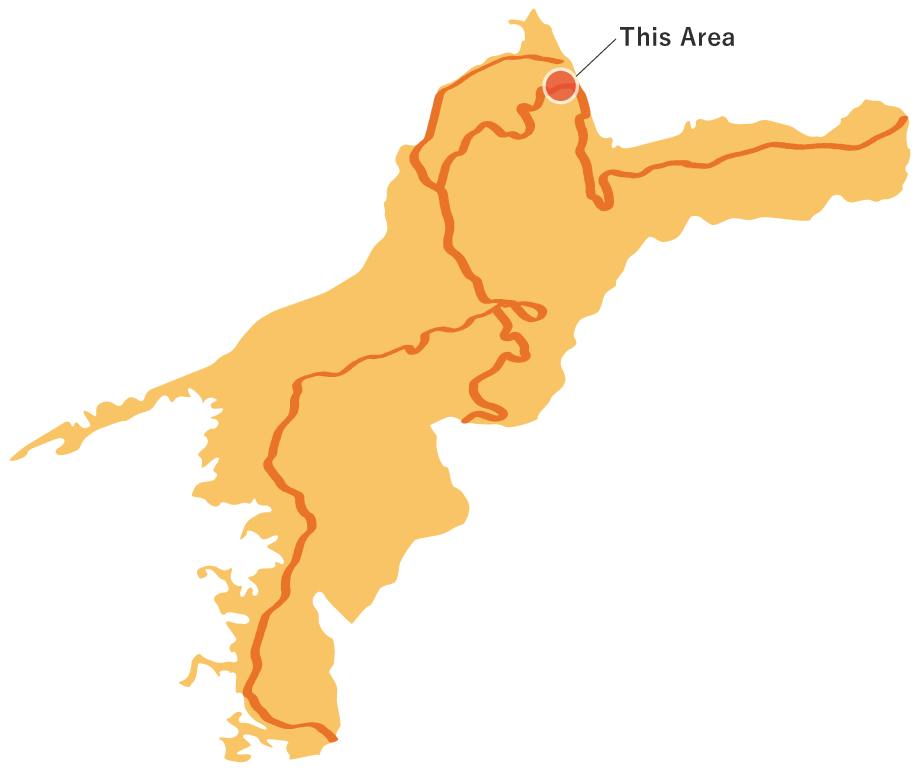
Kokubu and Karakohama Trail
This is a walking course through beautiful countryside from No. 58 Senyuji Temple of the Shikoku Sacred Sites, located on a hill at an altitude of 300 m, through No. 59 Kokubunji Temple, to Karakohama Beach. After descending the stairway from the Senyuji Temple grounds, a short distance into the mountain road, the Imabari Plain can be seen below, and as one descends the hill, the landscape of the countryside spreads out before one's eyes. As you continue walking through the peaceful landscape, you will arrive at the No. 59 Kokubunji Temple, a power spot with many cultural assets and a feeling of history where the national government of Iyo Province once was located. On a small hill near the end of the route is the Tomb of Imabari Feudal Lord. From there, looking out over the Seto Inland Sea, one can see a spectacular view of Karakohama Beach, which was selected as one of the 100 best beaches in Japan.
Kokubu and Karakohama Trail(8.1km)

 Spots to photograph
Spots to photograph
If you wish to receive a certificate, please take a photo that includes yourself at the designated photo point for each course.
Nearby sightseeing spots

-
1
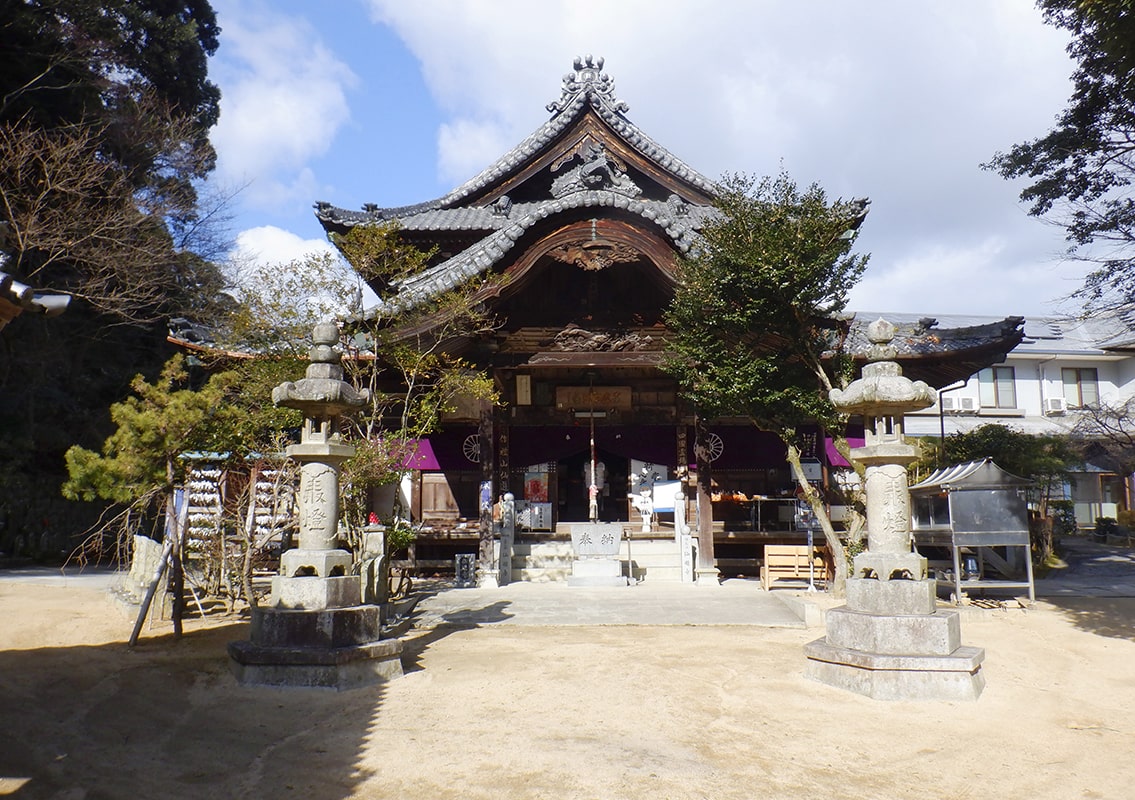 No. 58 Senyuji Temple
No. 58 Senyuji TempleIts precincts are located on a hill at an altitude of 300 m near the summit of Mt. Sakurei, and you can see the city of Imabari below. Beyond that, there is a magnificent view of the islands in the Seto Inland Sea and the "Shimanami Kaido" (opened in 1999). The principal image of Senyuji Temple is Senju Kannon, the guardian bodhisattva of Emperor Tenji. This Kannon statue was supposedly created by a female dragon who came up to the Ryuto River from the sea, bowing three times for each chisel mark. It is also called "Ryujo Itto Sanrei no Saku." In addition, Senyuji Temple was supposedly named based on how a monk called Abo Sennin disappeared like a cloud after living here like a hermit.
-
2
 Gorobei Slope
Gorobei SlopeOnce upon a time, Gorobei fell down on this slope and struck his hip, eventually dying from the injury. Since then, it has been called Gorobei Slope, and when walking on this slope, you should supposedly be careful and walk slowly. Please be careful as the slope is particularly steep around here.
-
3
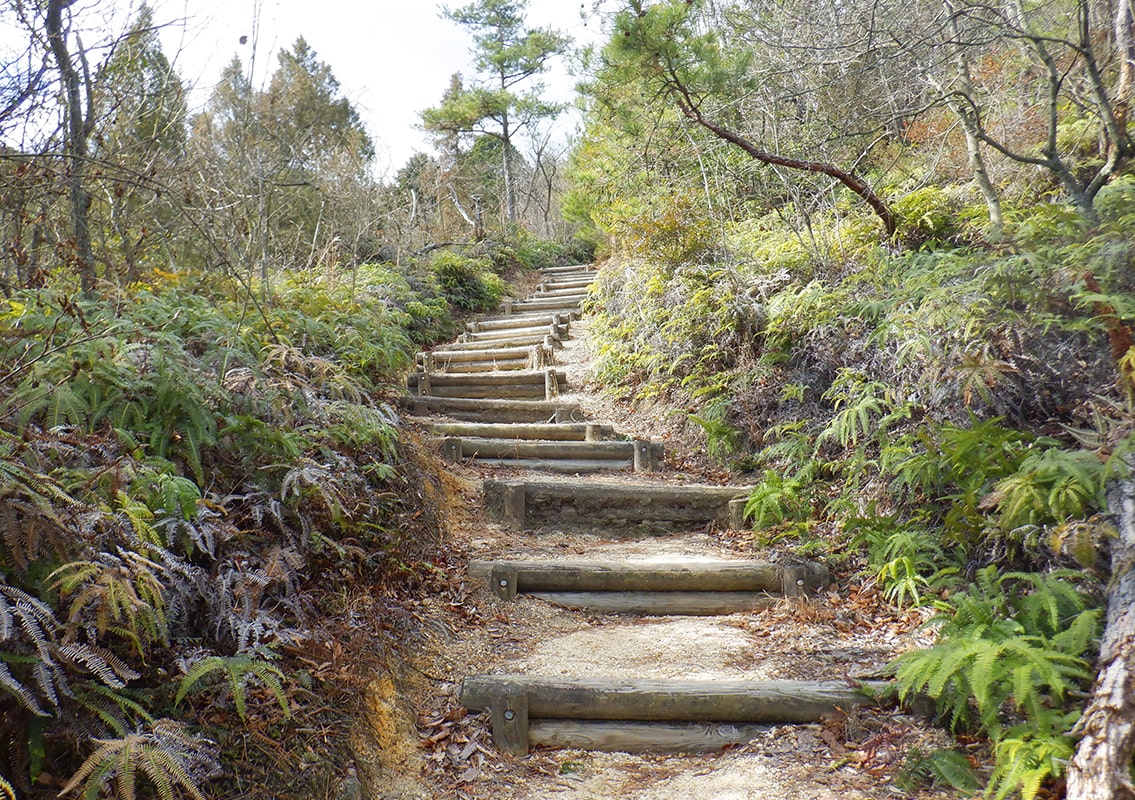 Stairway
StairwayAfter passing through the mountain road, the view gradually improves. There are wooden stairs around here.
-
4
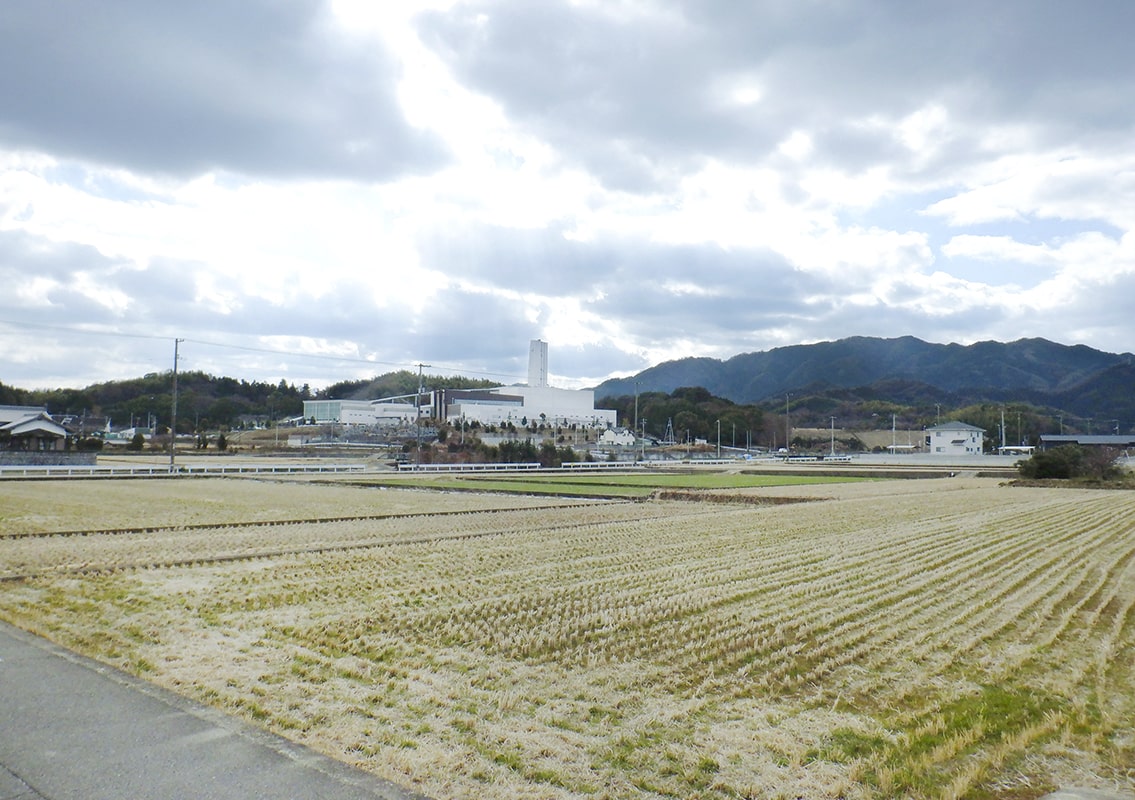 Imabari Garbage Disposal Plant
Imabari Garbage Disposal PlantAfter leaving the mountain road there’s a rural landscape. You can see the Imabari Garbage Disposal Plant nearby. The roads in this area have little traffic and are walkable.
-
5
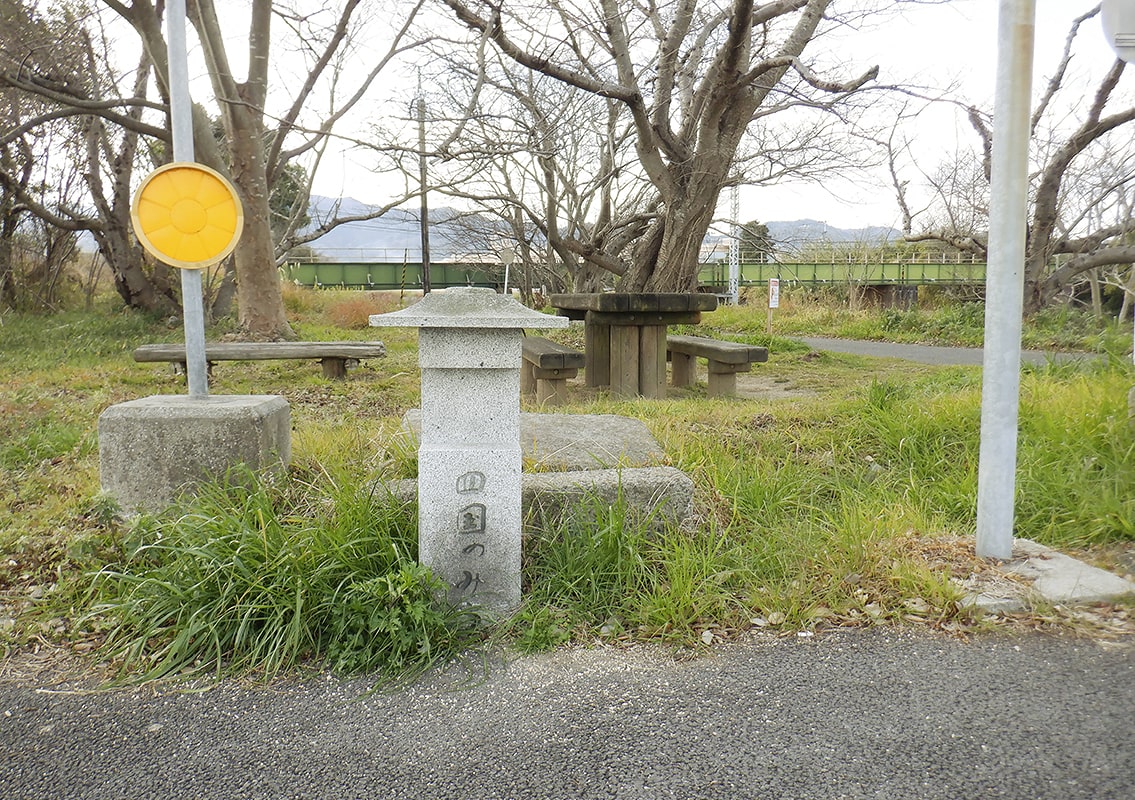 Kokubu Rest Area
Kokubu Rest AreaWe came to the Kokubu Rest Area. There are benches in this rest area. The next destination, Kokubunji Temple, is just around the corner.
-
6
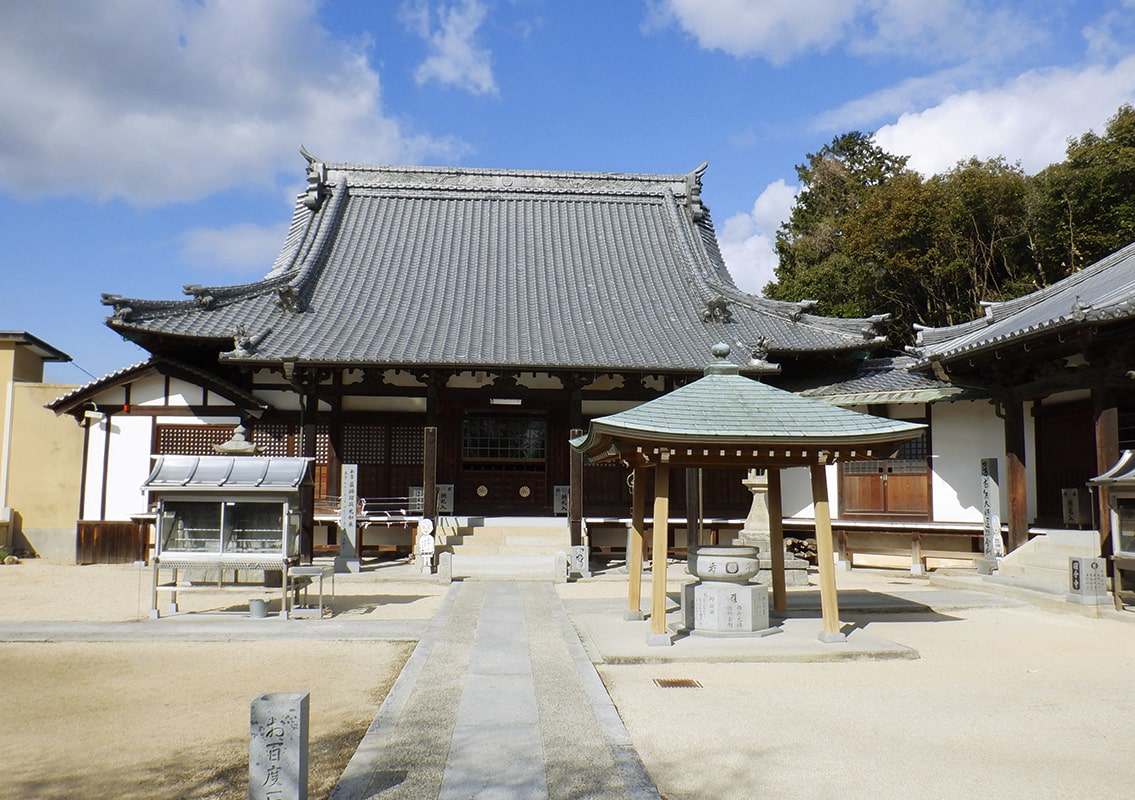 No. 59 Kokubunji Temple
No. 59 Kokubunji TempleKokubunji temples were built in each country during the era of Emperor Shomu to pray for a good harvest and national protection. The principal image of the Kokubunji Temple in Iyo Province is Yakushi Nyorai. It used to boast a magnificent temple compound, but it has been burned by several fires of war to its current state. The current main hall was rebuilt in the first year of Kansei (1789 AD), and is lined with a Daishido, temple kitchen, and a study etc. You can shake hands with the master in the precincts and make one wish. The master is also busy, so you can't do this or that.
-
7
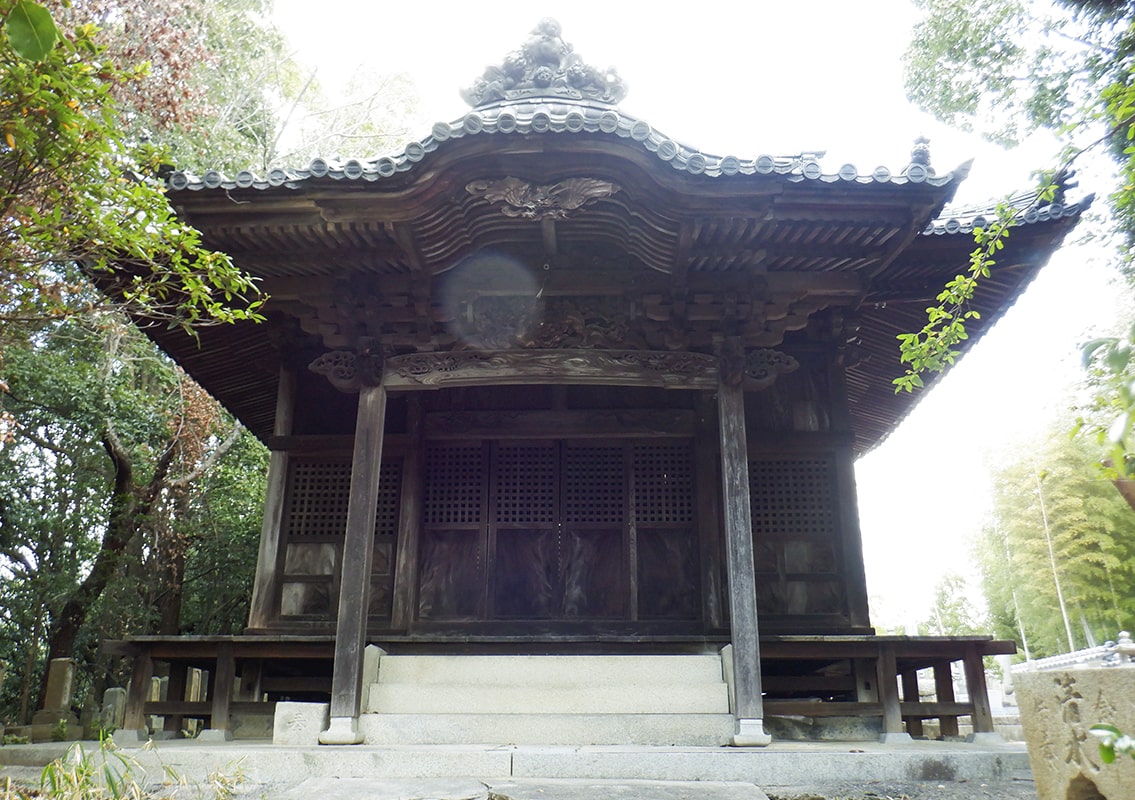 Wakiya Yoshisuke Mausoleum
Wakiya Yoshisuke MausoleumWakiya Yoshisuke was a military commander from the end of the Kamakura period to the beginning of the Nanbokucho period. The younger brother of Nitta Yoshisada. Following his elder brother Yoshisada, he contributed to the defeat of the Kamakura Shogunate. After his brother's death, he fought in Hokuriku and Shikoku as one of the generals of the Southern Court, but fell ill in Imabari and died suddenly at Kokubunji. The current mausoleum was rebuilt during the Kan’ei era.
-
8
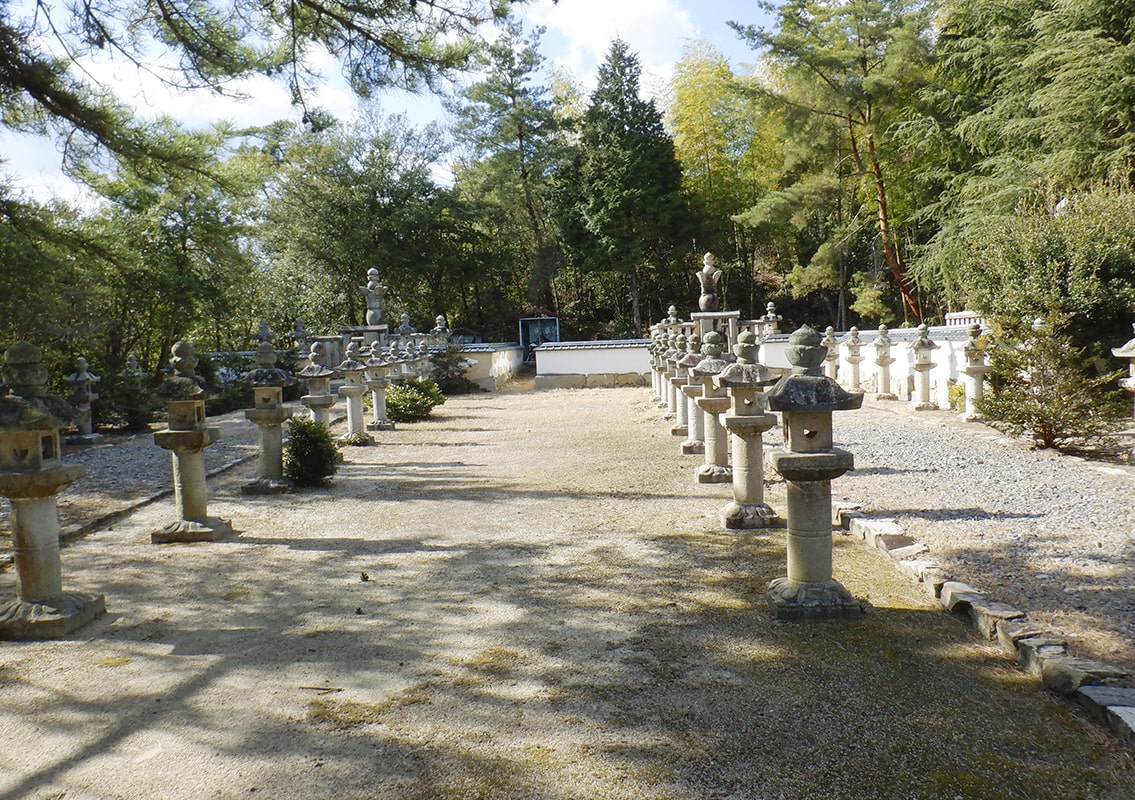 Tomb of Imabari Feudal Lord
Tomb of Imabari Feudal LordThe Tomb of Imabari Feudal Lord is located on a small hill along the Imabari Highway (former National Highway 196, current Prefectural Highway 38). There is a signpost along the prefectural road, and climbing the approach from there will lead you to a graveyard. The graveyard has three large, well-preserved Hokyoin pagodas for the Imabari feudal lord, the first Hisamatsu Sadafusa, the third Sadanobu, and the fourth Sadamoto. It's a historic site designated by the prefecture.
-
9
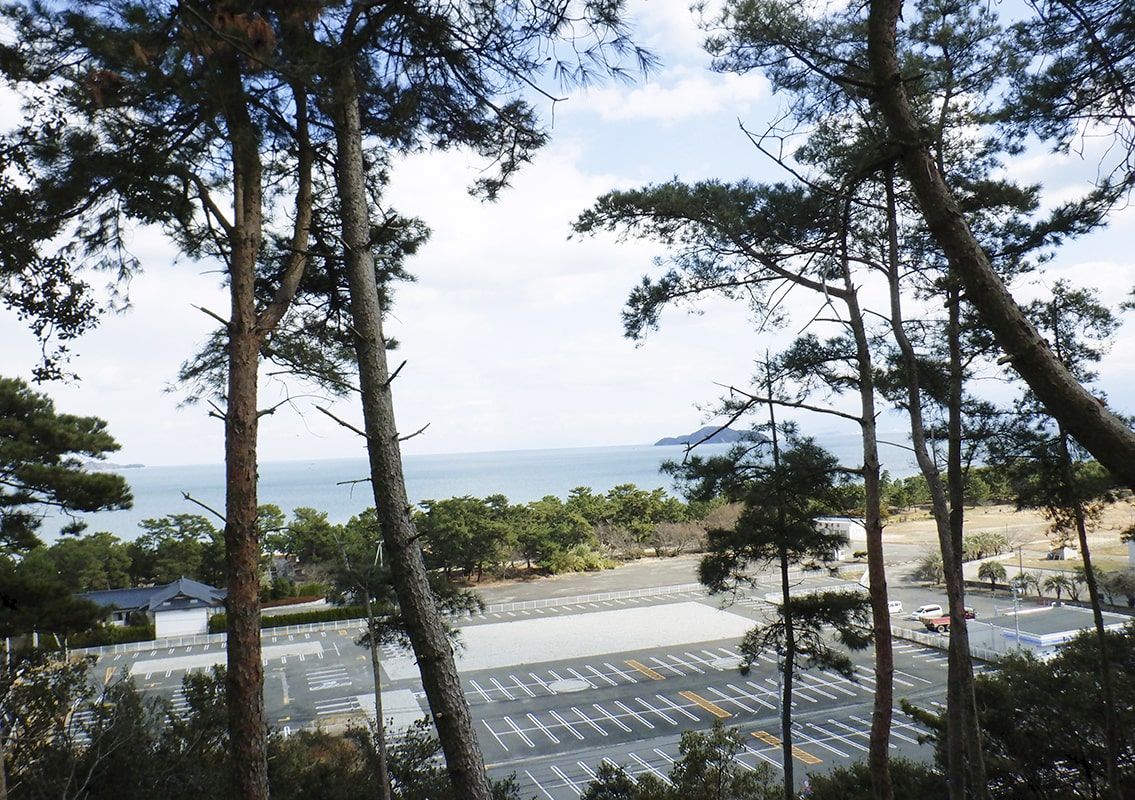 Karakohama Beach
Karakohama BeachFrom the Tomb of Imabari Feudal Lord, you can see Karakohama Beach, the Seto Inland Sea Shimanami Kaido, and Mt. Ishizuchi in the distance. Karakohama is a beautiful beach with white sand and green pines that has been selected as one of the 100 best beaches in Japan. It is crowded with beachgoers in the summer.



